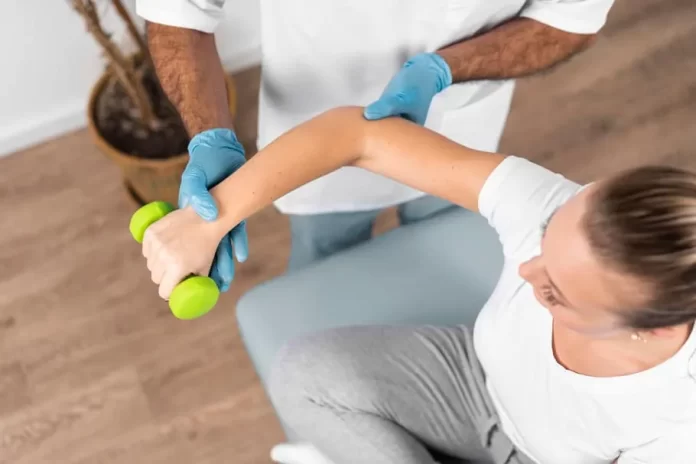Table of Contents
Introduction
Occupational therapy (OT) is a form of healthcare that assists individuals of all ages to accomplish what they want or need to do through the therapeutic use of daily activities (occupations). Recently, its scope has seen considerable shifts to accommodate the promise of mobility within healthcare, expanding beyond traditional clinic walls into various settings. This dynamic mode of delivery offers numerous advantages to both patients and practitioners alike.
What is Mobile Occupational Therapy?
Unpacking the Concept
Mobile occupational therapy brings therapy directly to patients instead of making them travel to clinics or hospitals for sessions. Occupational therapists visit homes, schools, workplaces or community centres where patients live or learn, performing assessments, devising treatment plans and organising therapeutic activities where people live or learn or work – acknowledging that environments significantly impact our ability to function and participate meaningfully in meaningful occupations.
Key Features
- Flexibility: Mobile occupational therapy provides a high degree of flexibility. Therapists can adjust their schedules according to the patient’s needs, offering treatment at times and places that best suit the patient.
- Personalisation: The environment is critical in shaping an individual’s occupational performance. By providing therapy in the individual’s natural environment, therapists can tailor interventions to the specific context of the person’s daily life.
- Holistic Approach: It gives a more comprehensive view of the patient’s situation. Therapists can observe the patient’s actual living conditions and better understand the challenges they face.
The Benefits of Mobile Occupational Therapy
Benefits for Patients
- Comfort and Familiarity: Receiving therapy in a familiar environment can be more comfortable for many patients, especially those with anxiety, cognitive issues, or transportation difficulties. It can enhance patient engagement and satisfaction with the therapy process.
- Functional Gains: Therapy in the natural environment enables individuals to practice and develop skills in context, which may lead to better functional outcomes.
- Accessibility: It broadens access to healthcare services. People living in rural areas, those with limited mobility, or those who cannot leave their homes for various reasons can still receive quality care.
Benefits for Therapists and the Healthcare System
- Efficiency: Mobile occupational therapy can increase efficiency in healthcare delivery. By reducing the time and resources required for patients to travel to clinics, more focus can be directed to therapeutic activities.
- Improved Outcomes: As treatment plans are designed based on the patient’s living and working conditions, they tend to be more effective, leading to better outcomes.
- Job Satisfaction: For therapists, the chance to work in various settings can be rewarding and intellectually stimulating. They can form deeper connections with patients and see the tangible results of their work.
Challenges and Solutions in Mobile Occupational Therapy
Though mobile occupational therapy offers great potential, its practitioners also face unique obstacles that must be addressed if this mode of healthcare delivery is to realise its full potential fully.
Time and Resource Constraints
Therapists travelling between multiple locations may face time management and resource allocation challenges, which must be resolved through efficient scheduling, using digital tools for coordination purposes, and providing adequate support and resources.
Safety and Privacy Concerns
Travelling between environments may present safety and privacy challenges for therapists. To address these concerns, setting clear policies, providing safety training courses, and using secure digital platforms for data storage can all help mitigate them.
Variability in Environments
Environment variations make standardising care a daunting challenge. But rather than try to eliminate this diversity, mobile occupational treatment shines. Therapy sessions should be tailored specifically for each person in their environment, and therapy should be personalised accordingly – this is where mobile occupational medicine comes in handy!
The Future of Mobile Occupational Therapy
As technology and healthcare delivery models advance, mobile occupational therapy stands to play an increasingly pivotal role in healthcare delivery. With more and more focus on personalised patient-centric care, its role becomes even more vital.
Role of Technology
Technology plays a crucial role in shaping the future of mobile occupational therapy, from virtual consultation platforms and mobile applications that aid treatment plans to those that enable quicker delivery of care for patients.
Policy Changes and Support
Policy changes can have an enormous influence on this form of therapy, too. By acknowledging and funding mobile occupational therapy services, policymakers can ensure more individuals can access this vital form of care.
Education and Training
As mobile occupational therapy increases in popularity, so too must its demand. Future occupational therapy curricula should incorporate mobile therapy concepts and techniques as part of an evolving field like this.
Conclusion
Mobile occupational therapy represents a sea change in healthcare delivery, placing therapy right where needed. Its power lies in tailoring therapy to each person’s unique context for enhanced engagement and better outcomes. Although challenges exist, they are surmountable; their advantages cannot be overstated as we move toward patient-centred healthcare systems prioritising mobility OT services. It will become increasingly essential as healthcare systems move toward greater patient engagement.








